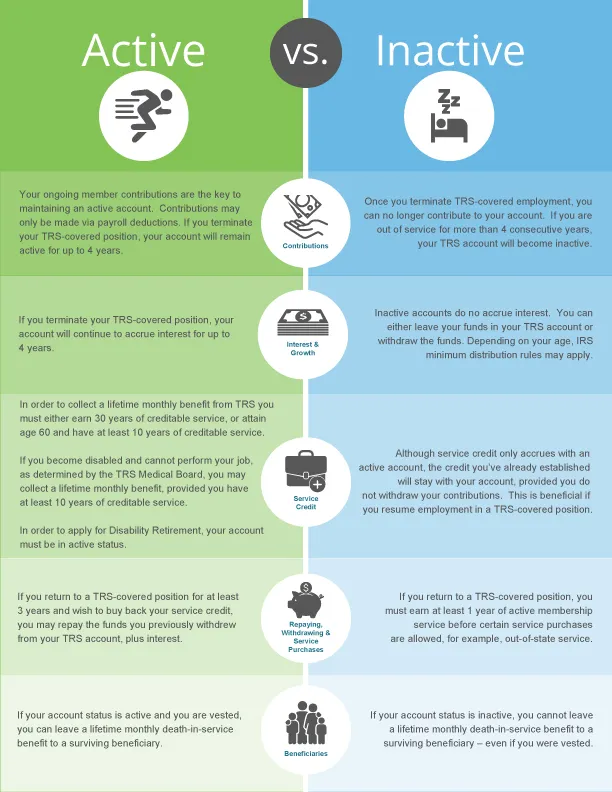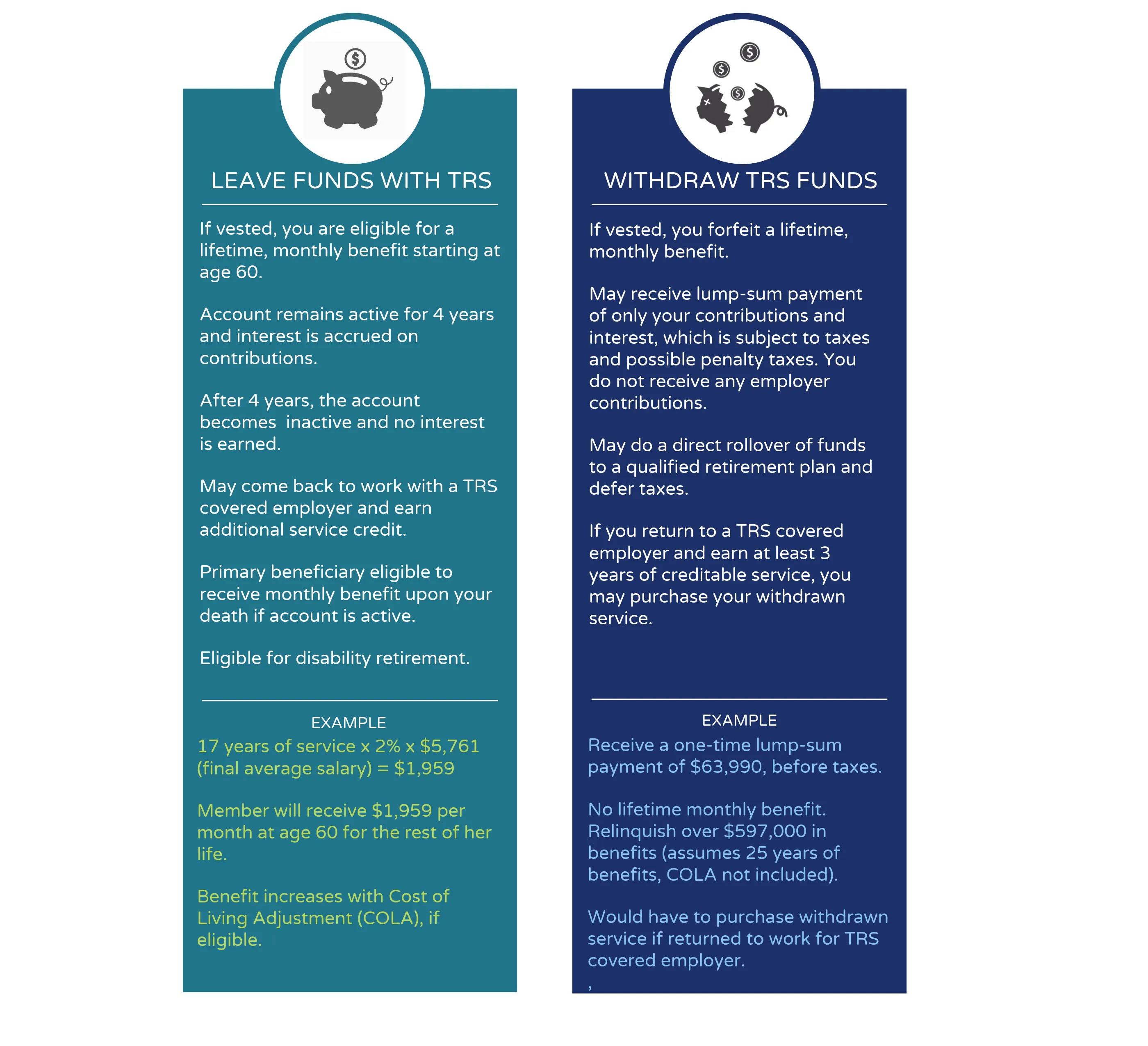
Active Accounts
TRS membership and contributions are conditions of employment if you are working in a TRS-covered position. Your regular member contribution is what makes your account remain active. You can only contribute if you’re employed in a TRS-covered position; (learn more about contributions here). If you leave your TRS-covered position, your account will remain active for up to 4 years, even with no member contributions.
Members with an active account can:
- Continue to accumulate interest
- Establish any additional service credit;
- Repay any previously withdrawn accounts;
- Apply for disability retirement; or
- Leave a monthly death-in-service benefit to a surviving beneficiary.
Inactive Accounts
If you are out of service for more than 4 consecutive years, your TRS account will immediately become inactive. If your account becomes inactive it will not be credited with additional interest and you will not be eligible to:
- Establish any additional service credit;
- Repay any previously withdrawn accounts;
- Apply for disability retirement; or
- Leave a monthly death-in-service benefit to a surviving beneficiary.
If you have not withdrawn your contributions from your inactive account and you return to TRS covered employment, the service in your inactive account will be credited to your current (active) account after you have established at least 1 year of membership service.
Leaves of Absence
The normal 4-year period in which you may be out of covered employment and still retain an active account may be extended by a leave of absence approved by the TRS Board of Trustees. Allowable leaves of absence for the purpose of extending the duration of your active account beyond the 4-year period include maternity/adoption, illness, study leave, and military service. Please contact our office or visit our website for detailed information.
Is Withdrawing Right For You?
If you’re leaving your TRS covered position, you may be considering withdrawing funds from your TRS account. It is important to carefully weigh your options as this is a permanent decision that can significantly impact your financial future in retirement.
Ask yourself the following questions when considering withdrawing your TRS funds:
- Am I vested or close to being vested?
- Am I confident that I will never return to work in any TRS covered position?
If the answer to one of these questions is yes, then it may benefit you to leave your funds with TRS. Your account will remain active for up to 4 years after you leave a TRS covered position.

How to Withdraw
If you terminate your TRS covered employment you may apply for a refund of contributions and interest. Please log into your account and complete the Application for Refund of Contributions. You must download, print, sign and return the summary page along with a copy of your valid identification.
Your refund payment from TRS is a lump-sum distribution of your contributions and interest in your TRS membership account. Partial withdrawals and loans are not allowed.
The taxable portion of your refund is subject to federal and Georgia taxes. To defer taxation, you may elect a direct rollover of the taxable funds in your account to another qualified retirement plan [401(a), 403(a) or 401(k)]; a 403(b) tax sheltered annuity; a governmental 457 plan; or a traditional, Roth, or rollover IRA. If you do not elect a rollover, federal tax law requires that TRS withhold 20% federal tax from the taxable portion of your refund. You may also be required to pay an additional 10% federal tax if you are younger than age 59½ when you withdraw your funds. TRS will not withhold the additional 10%; however, if applicable, you may pay this tax at the time you complete your federal tax return for the year in which you receive your refund. Georgia tax withholding from your refund check is not mandatory and may be paid when you file your Georgia tax return.
Limitations
You are not eligible for a refund after you accept other TRS covered employment. Members who are not actively working in their TRS covered positions during the summer months because the school year has ended are not considered terminated from TRS covered employment and therefore are not eligible for a refund.